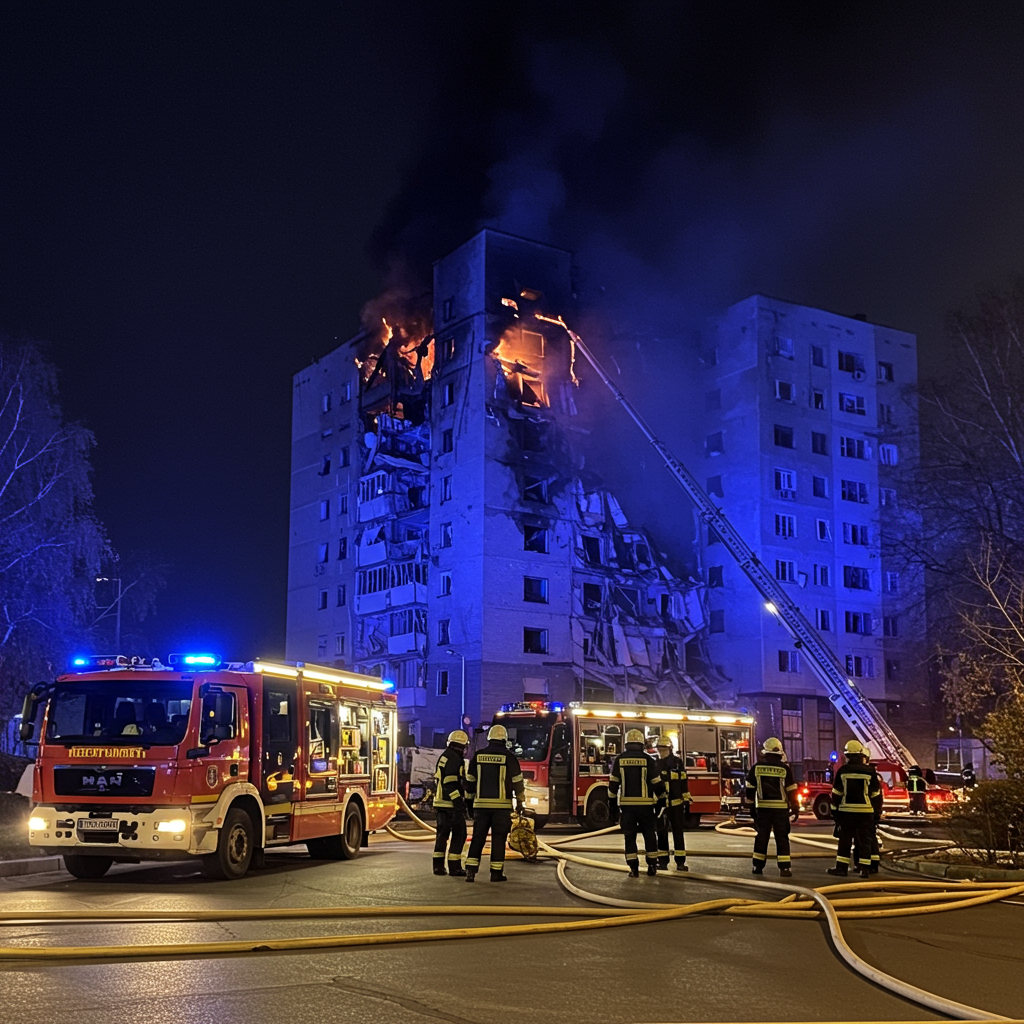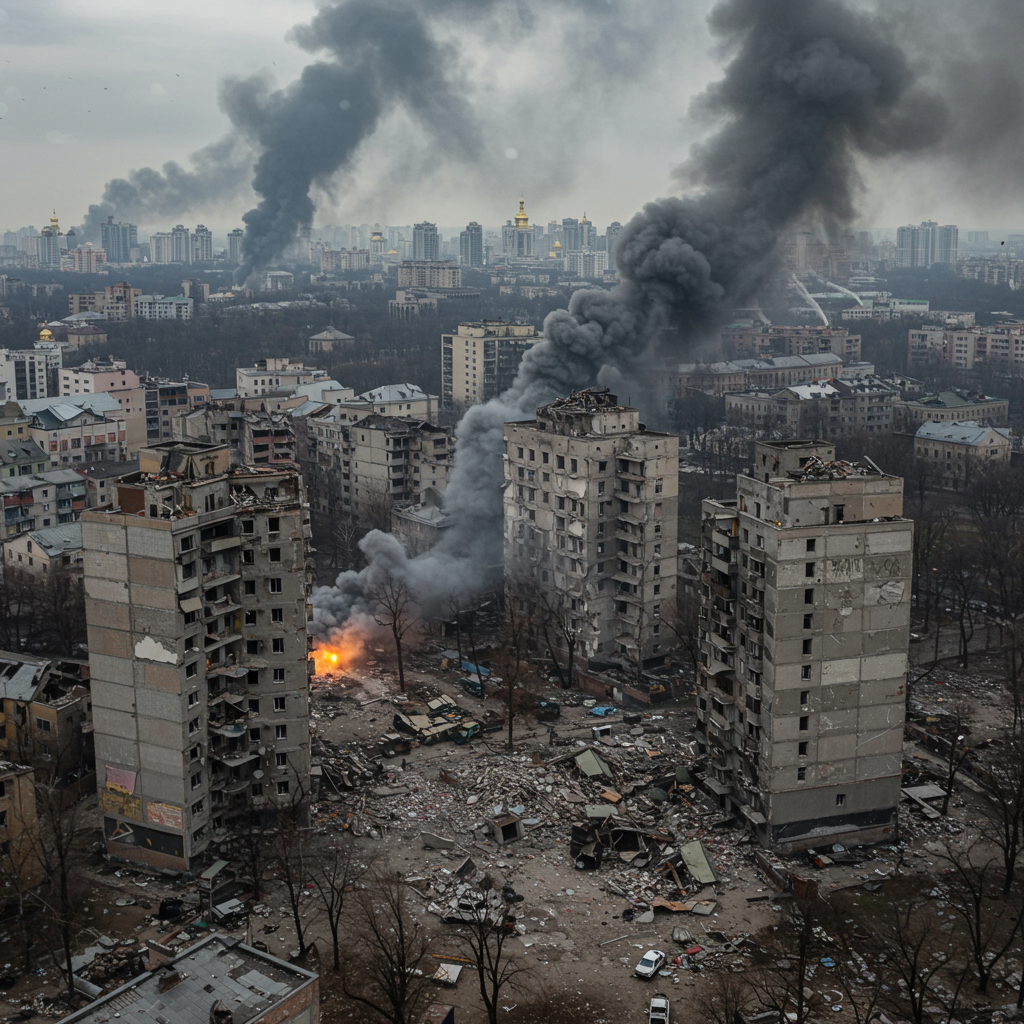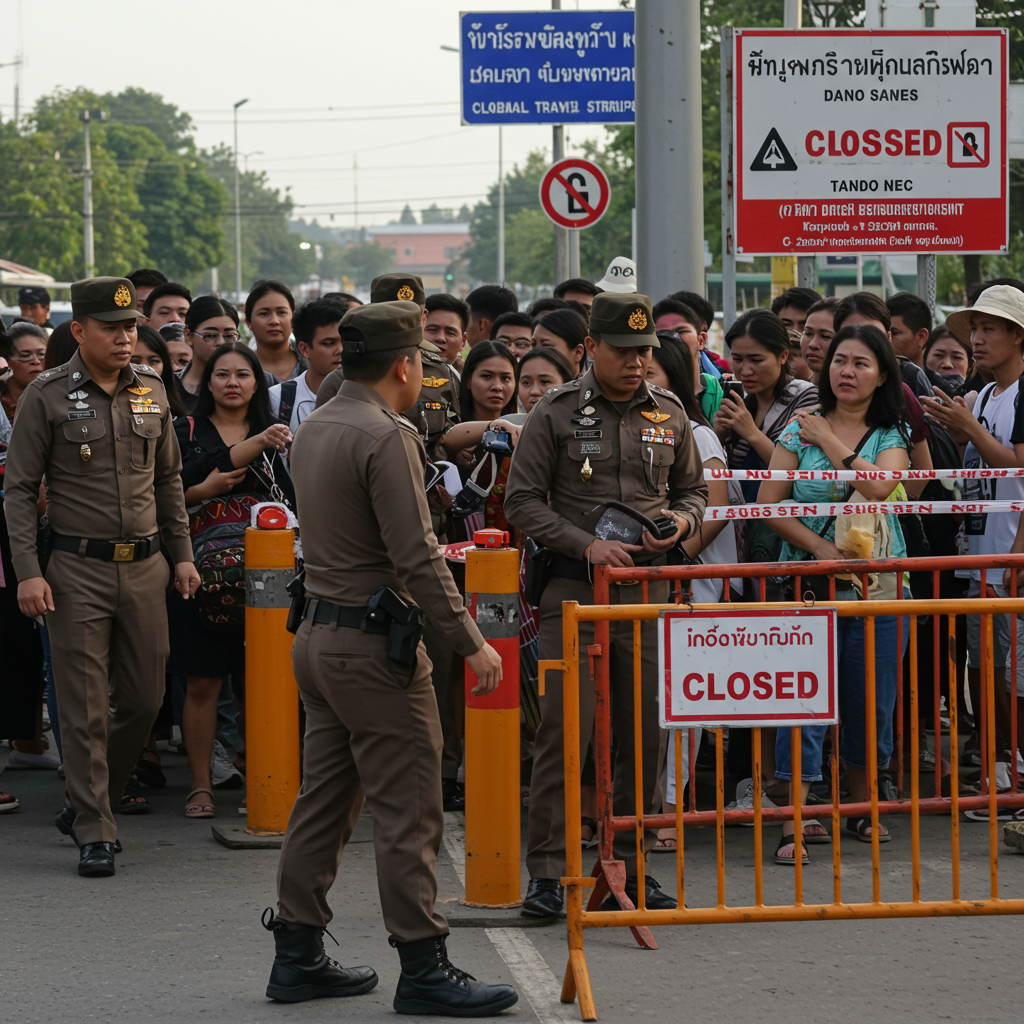A devastating Russian drone strike targeted the southern Ukrainian port city of odesa overnight, resulting in tragic civilian casualties and extensive damage. The attack on the night of June 27-28, 2025, claimed the lives of two people and left at least 17 others injured, including three children. Emergency services responded quickly to the scene as the strike ignited fires and trapped residents in a high-rise building, highlighting the ongoing human toll of the conflict.
Officials confirmed the fatalities were a married couple residing in one of the affected buildings. Among the injured are boys aged 3, 7, and 14. Several people required hospitalization, with some remaining in critical condition following the assault. This incident underscores the brutal reality faced by civilians living under the threat of aerial bombardment, a defining characteristic of the prolonged conflict.
A Night of Terror in Odesa
The drone assault commenced during the late hours of June 27 and continued into the early morning of June 28. Russian forces launched multiple unmanned aerial vehicles (UAVs) towards Odesa and the surrounding region. Air defense units across Ukraine were engaged, successfully intercepting the vast majority of the incoming drones. However, despite these efforts, at least one strike drone found its target within Odesa city limits. Damage also resulted from falling debris of downed aerial assets, according to reports.
The Head of Odesa Oblast Military Administration, Oleh Kiper, was among the first officials to report on the attack’s impact. Initial assessments indicated 14 people injured in the city, including the three children. As emergency responders continued their work and damage was surveyed, the total number of injured in Odesa and the region was revised upwards to 17 by the Odesa Oblast Prosecutor’s Office. The swift transition from initial reports to a higher casualty count reflects the chaotic and dangerous nature of such events.
The Human Cost: Fatalities and Injuries
The Odesa drone attack had immediate and tragic consequences for local residents. Rescuers later recovered the bodies of two people from the rubble, confirmed by Oleh Kiper to be a married couple. Their deaths add to the mounting civilian death toll in Ukraine since the full-scale invasion began. This specific strike brought the war’s harsh reality directly into a residential area, claiming innocent lives.
The number of people injured in the attack is substantial, totaling 17. This figure includes three children: a 3-year-old, a 7-year-old, and a 14-year-old boy. Some of the injured experienced acute stress reactions in addition to physical wounds. Six individuals required inpatient hospital care, with three listed in critical condition, including one child. The remaining injured received necessary treatment on an outpatient basis, allowing them to recover at home. The range of injuries, from smoke inhalation in a young child to critical conditions requiring intensive care, illustrates the indiscriminate impact of drone strikes on civilian populations.
Widespread Damage Across the City
The Russian drone attack caused significant material destruction across various locations in Odesa. The primary target appears to have been a 21-story residential building. A drone strike hit this high-rise, sparking a fire that rapidly spread across multiple floors, specifically the sixth, seventh, and eighth floors. The intense blaze and resulting smoke trapped residents inside their apartments, prompting urgent rescue operations by the State Emergency Service (SES).
Beyond the residential tower, other properties sustained damage. These included outbuildings located on private household grounds, an administrative building, and warehouses belonging to a business enterprise. The force of the blast and falling debris also impacted a disused petrol station building and several parked cars in the vicinity. The wide array of damaged structures indicates that the attack or its resulting debris affected a considerable area within the city. Rescuers bravely worked amid fire and debris, successfully pulling five people, including a small child, to safety from the burning residential tower.
Drone Warfare: A Defining Feature of the Conflict
The Odesa attack is another stark example of the prominent role drone warfare plays in the ongoing conflict in Ukraine. Both Russian and Ukrainian forces extensively utilize a variety of drone technologies, from small, short-range tactical UAVs used near the front lines to larger, long-range loitering munitions like the Shahed drones used in strikes such as the one on Odesa. The conflict has become a testing ground for increasingly sophisticated drone systems and tactics.
Ukrainian forces have also employed drones, including domestically produced and modified commercial variants, for deep strikes against targets within Russia and occupied territories. A notable example mentioned in reports is a covert operation earlier in June involving cheaply made drones that allegedly damaged or destroyed a significant portion of Russia’s strategic bomber fleet. This reciprocal use of drone technology escalates the scope and unpredictability of the conflict.
Civilian Impact and Broader Context
Tragically, civilians often bear the brunt of these attacks. United Nations reports provide grim statistics on the human cost. According to the U.N. Human Rights Monitoring Mission in Ukraine, short-range drone attacks alone resulted in at least 395 civilian deaths and over 2,600 injuries between February 2022 and April 2025. Disturbingly, the report attributes nearly 90% of these specific attacks to Russian forces.
The overall civilian casualty figures for the war paint an even grimmer picture. As of a June 11 report from the U.N. Office of the High Commissioner for Human Rights, the total estimated civilian casualties since the start of the invasion exceed 13,300 deaths and 34,700 injuries. The Odesa drone strike adds two more confirmed fatalities and 17 injuries to these escalating numbers. While Moscow offered no immediate public comment on the Odesa incident, their defense ministry did claim to have downed over 40 Ukrainian drones over western Russia and occupied Crimea during the same period, highlighting the reciprocal nature of these aerial assaults.
The attack on Odesa underscores the continued threat faced by civilian populations in Ukrainian cities far from the main front lines. It also demonstrates the persistent use of strike drones by Russian forces against urban areas, causing loss of life, injuries, and destruction of civilian infrastructure. As the conflict enters its fourth year, the adaptation and deployment of drone technology by both sides continues to shape the battlefield and tragically impact the lives of ordinary citizens.
Frequently Asked Questions
What were the immediate consequences of the Odesa drone attack on June 28?
The Russian drone attack on Odesa during the night of June 27-28 resulted in significant casualties and damage. Two local residents were killed, identified as a married couple. At least 17 people were injured, including three children aged 3, 7, and 14. The attack also caused substantial damage, most notably a fire across several floors of a 21-story residential building, along with damage to other structures like outbuildings, an administrative building, warehouses, and vehicles.
How did the Odesa drone strike fit into Russia’s overall attack that night?
The drone strike in Odesa was part of a larger, coordinated aerial assault by Russian forces across Ukraine on the night of June 27-28. Reports indicate Russia launched a total of 23 Shahed loitering munitions and various decoy drones. Ukrainian air defense units were highly effective, successfully downing 22 of these drones. However, one strike drone managed to penetrate defenses and cause direct impact in Odesa, and damage was also attributed to the impact of falling debris from other intercepted drones.
What does this attack reveal about the role of drones in the Ukraine war?
The Odesa attack highlights the central role of drones in the ongoing conflict. It shows Russia’s continued use of long-range strike drones like Shaheds against urban centers, causing civilian casualties and infrastructure damage. Coupled with reports of Ukraine’s use of drones for deep strikes, the incident underscores that both sides rely heavily on evolving drone technology. UN data cited in reports indicates that drone attacks, particularly short-range ones attributed largely to Russia, are a significant source of civilian casualties in the war.
The impact in Odesa tragically illustrates the human cost of this modern form of warfare, even as air defenses successfully intercept most threats.
The situation in Odesa remains a reminder of the daily dangers civilians face. Emergency services continue working to assess the full extent of the damage and provide aid to those affected. The international community continues to monitor the situation closely.
Word Count Check: 1012




